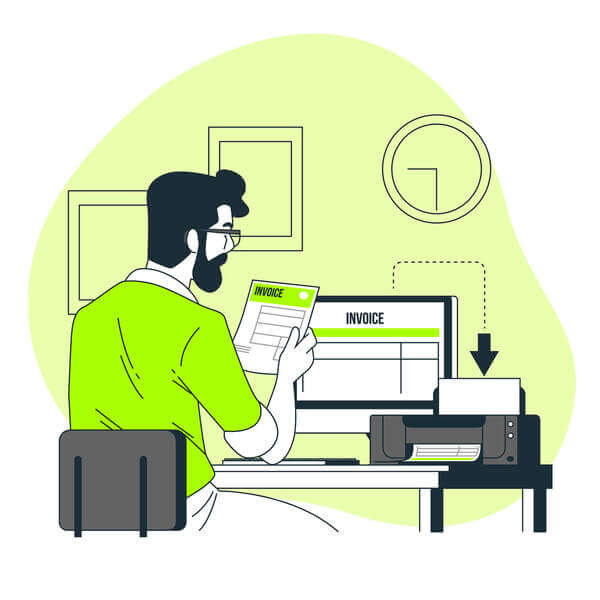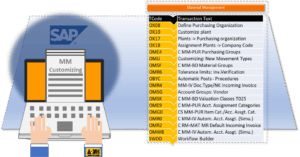An asset is basically anything you own or take care of, with an expectation that it will keep bringing you benefits or money. An asset is like a resource that you can totally measure its value. People, businesses, and even governments can have stuff. So, basically, when companies buy something like a fancy new asset, they put it on their balance sheet. Before, they used to write down these purchases on a sources and uses of funds statement, but now it’s called a cash flow statement.
Inventory, on the other hand, is something that is kept on hand for the purpose of being consumed, while fixed assets are kept for more permanent uses.
Stages of the Fixed Asset Life Cycle
Acquisition
The main operational procedure in asset accounting involves the acquisition of assets and/or the capitalization of internally generated goods or services. The Asset Accounting module offers a range of methods for managing this particular business process.
Assets under Construction (AuC)
Acquisitions to fixed assets that are not allowed to be capitalized and depreciated immediately are referred to as assets under construction.
- Collect the costs using an investment measure
- Collect the costs on an independent asset under construction in the Asset Accounting
Direct Capitalization
Direct capitalization refers to the acquisition of assets that do not involve any construction phase for the asset. Instead, they are capitalized and depreciation begins immediately.
Depreciation
Depreciation is an accounting technique that is employed to distribute the cost of a tangible or physical asset over its useful lifespan. Depreciation is a measure of the amount by which the value of an asset has been depleted over time. The payment structure enables companies to generate income from their owned assets by spreading out the cost over a specific duration.
The cost of assets, such as machinery and equipment, is high. By utilizing depreciation, companies have the option to distribute the total cost of an asset over multiple years instead of recognizing it entirely in the first year. This allows them to align the expenses associated with depreciation to the corresponding revenues within the same reporting period. The practice of writing off an asset’s value over a specific period, such as its useful life, enables a company to account for the depreciation of the asset over time.
- Straight Line
Straight-line depreciation is a method used in accounting to allocate the cost of a fixed asset evenly over the anticipated period of time that the organization will derive benefits from its utilization. - Sum of Years Digits Depreciation Method
The sum of year depreciation method is a type of accelerated depreciation method. This method involves a faster decline in the value of an asset over time. The majority of an asset’s depreciation is acknowledged during the initial years of its useful lifespan. The initial years of an asset’s life allow for larger deductions compared to later years, particularly for assets that experience significant usage during their early stages. - Units of Production
The value of an asset can vary depending on how it is used. The unit of production depreciation method is commonly employed for assets that experience a greater level of wear and tear. Hence, this practice enables companies to increase their reported depreciation during periods of high productivity, while reducing it during the off-season. - Double Declining Balance
The double declining balance (DDB) depreciation method is a financial accounting technique that allows for the accelerated depreciation of specific assets, resulting in a higher depreciation expense compared to the straight-line method. The depreciation of an asset is typically highest during the initial year of ownership and gradually decreases as time goes on.
Revaluation
Assets A fixed asset may be revalued for a number of reasons, including the sale of the asset to a different business unit, a merger or acquisition of the company, etc., and the resulting change in the carrying value of the fixed asset may be positive or negative, depending on the fair market value of the fixed asset.
Assets Revaluation Methods
Indexation Method, Current Market Price Method and Appraisal Method
Impairment
An impaired asset refers to an asset that has been assessed to have a value lower than its book value or net carrying value. To clarify, an impaired asset refers to an asset whose current market value is lower than its recorded value on the balance sheet. In order to address the loss, it is necessary to update the company’s balance sheet to accurately represent the reduced value of the asset.
Asset impairment is a significant decrease in the recoverable amount of an asset, typically occurring suddenly and only once. The causes of various events can range from natural disasters to regulatory changes made by humans, with many other factors playing a role as well.
Disposition
At some point, a company may find that an asset is no longer beneficial due to factors such as inefficiency or other circumstances. The asset should be disposed of.When an asset reaches the end of its useful life, a company has several options for disposing of it, including selling, trading, or scrapping the asset.
During this phase, the assets are removed from the accounting records. The asset disposal transaction during that financial period may result in either a gain or a loss being recorded.



